
November 12 is World Pneumonia Day. The information is provided by Dr. Siwaphorn Charoenthat, a specialist in geriatric medicine at PatRangsit Hospital.
Pneumonia, also known as lung inflammation or lung congestion, is an inflammation of the lung tissue and airways, often caused by bacterial and viral infections. Symptoms commonly include fever, cough, phlegm production, difficulty breathing, wheezing, and frequent severe episodes that can lead to complications such as blood infections and respiratory failure, which can be life-threatening.
Preventive measures include:
If symptoms such as fever, cough, and wheezing occur, it is advisable to seek medical attention promptly for timely treatment.
In addition, receiving the pneumonia vaccine (Pneumococcal Vaccine) is another option to strengthen the immune system and prevent the disease. Studies have shown that vaccination can reduce the incidence of pneumonia caused by Streptococcus pneumoniae bacteria by 45%.
People who should receive the vaccine include:
Pneumonia is a disease that should not be overlooked, as early detection and proper treatment can not only alleviate symptoms but also lead to a quick recovery, allowing individuals to return to their normal lives.

บทความโดย
พญ.ศิวาพร เจริญทัศน์
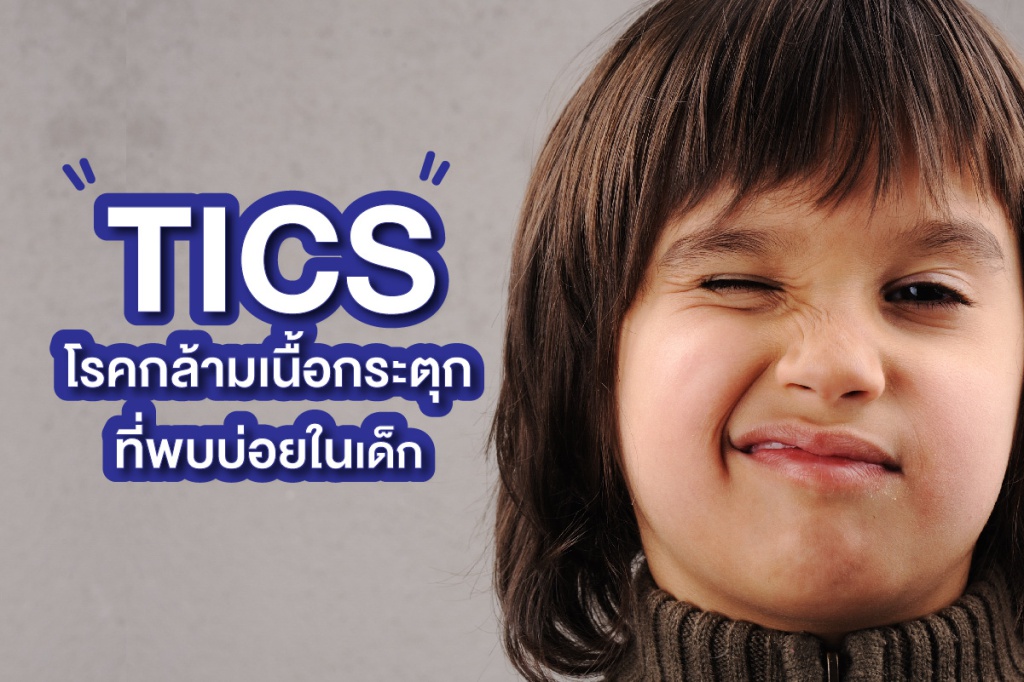
TICS, or Tourette's syndrome, is a condition commonly found in children.
Tourette Syndrome (TS) is a neurological disorder characterized by involuntary muscle movements or tics. These tics can involve rapid movements or sudden jerking of muscles in various parts of the body, such as the face, shoulders, hands, or legs, as well as the production of sudden sounds or vocalizations, such as coughing or throat clearing. In some cases, the vocalizations may include the involuntary utterance of inappropriate or offensive words. These symptoms occur spontaneously, unintentionally, and are difficult to control. Tics in TS can be compared to small hiccups that occur involuntarily, even though we don't want them to happen.
The cause of TS is believed to involve changes in the functioning of the brain regions that control movement, and there is a tendency for it to be genetically influenced. However, TS is not considered dangerous or damaging to the brain. It often co-occurs with conditions such as attention-deficit/hyperactivity disorder (ADHD) and obsessive-compulsive disorder (OCD).
TS is commonly found in children and may first appear around the age of 5. The symptoms may come and go in episodes, and they tend to worsen during periods of stress, anxiety, fatigue, or excitement. The symptoms often improve when stress or anxiety is reduced. During episodes of frequent or severe symptoms, individuals with TS may experience emotional or social difficulties, such as feeling embarrassed, being teased, or isolating themselves.
The duration of TS symptoms can vary. In most cases, symptoms improve within a few months after they first appear. However, there are often recurring episodes of symptoms, which can be more pronounced during the age range of approximately 8 years to adolescence. Symptoms tend to improve after passing through the adolescent stage.
Treatment for TS depends on the severity of the symptoms and whether they cause significant impairment or other problems. If the tics are mild and not interfering with daily activities, management strategies may involve stress reduction, avoiding fatigue, reducing teasing, or providing reassurance. However, if the tics are severe and affecting daily functioning, the goal of treatment is to reduce the frequency of tics. This can be achieved through techniques that help individuals become aware of the physical sensations that often precede the tics, allowing them to partially control or suppress the tics. Relaxation techniques may also be helpful in managing emotional discomfort associated with tics.
In addition to behavioral and psychological interventions, medication can be prescribed to help alleviate and manage the tics and movement symptoms. Medications can be used in conjunction with behavioral and psychological therapies to provide comprehensive treatment.

บทความโดย
พญ.ชนม์นิภา บุตรวงษ์
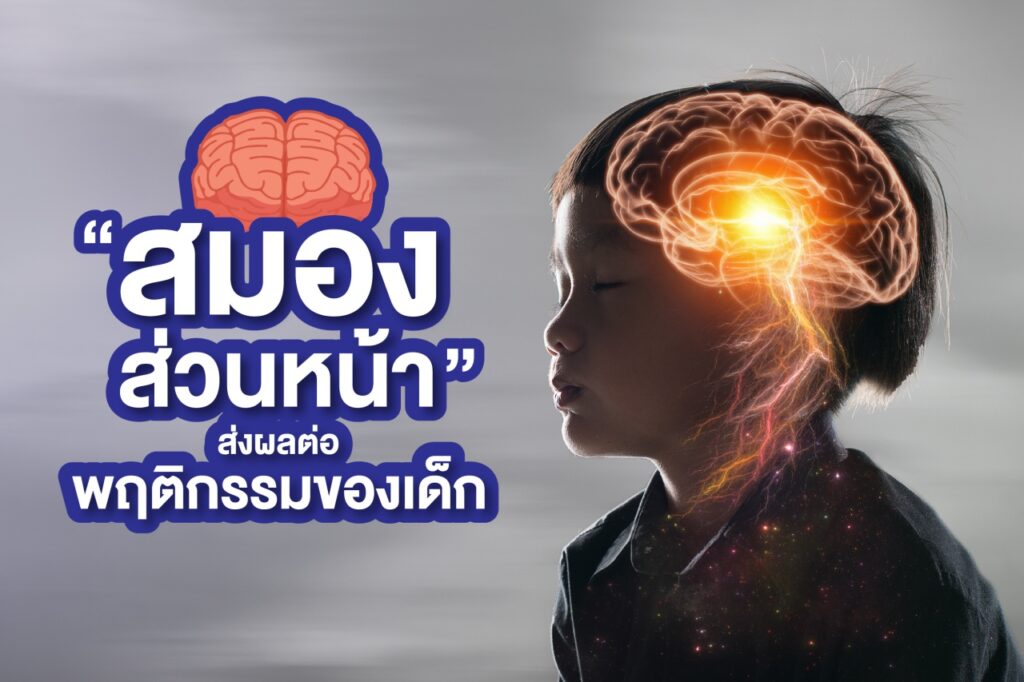
The front of the brain is affecting children's behavior by Dr. Chonnipa Butwong, a specialist in child and adolescent psychiatry, PatRangsit Mother and Child Hospital
The functioning of the prefrontal cortex is highly important because it is responsible for attention, planning, problem-solving, flexibility, anticipation, considering consequences, inhibiting impulses, and self-control
If there is a lack of impulse control, children will respond to various stimuli according to their instincts or emotions, which may result in inappropriate behavior. However, if children learn how to wait, think carefully before taking actions, and consider the consequences of their actions, the prefrontal cortex can work better.
Childhood is a period where behavioral problems often occur because the prefrontal cortex is still developing and not fully mature. This leads to issues with emotional control, inappropriate problem-solving, and a lack of self-regulation. Under normal development, in an environment without excessive stress or confusion, the prefrontal cortex gradually develops until it reaches full maturity in adulthood. However, children should receive continuous training and learn how to help themselves, follow rules, and understand the consequences of their behaviors. This will stimulate the development of the prefrontal cortex.
However, if there are disturbances in the functioning of the prefrontal cortex, it affects the ability to manage various tasks and daily life, such as memory, attention, self-control, and planning. For example, conditions like depression can affect the prefrontal cortex's ability to function properly, leading to difficulties in memory, attention, and self-control. Alzheimer's disease, which causes degeneration of the brain, can result in problems with memory and the inability to plan and manage daily life. These conditions have an impact on brain function and can lead to inappropriate behavior, such as the inability to control emotions, lack of organization or planning, lack of attention and interest, short-term memory problems, multitasking difficulties, and an inability to learn from consequences.
Therefore, when behavioral, emotional, or cognitive problems arise, it is necessary to identify the possible factors that may hinder the prefrontal cortex's functioning. It is important to avoid making hasty judgments about oneself or others, labeling them as having a bad personality or being inherently problematic. Seeking appropriate help and intervention can help individuals return to a normal state where they can manage their daily lives, plan tasks effectively, and cope with future challenges appropriately.

บทความโดย
พญ.ชนม์นิภา บุตรวงษ์

Factors of educational success in children by Dr. Chonnipa Butwong, MD, a specialist in child and adolescent psychiatry, PatRangsit Mother and Child Hospital.
Many people may believe that educational success is solely determined by intellectual intelligence. However, intellectual intelligence is just one aspect. Other factors within the child also influence educational success, such as motivation, emotional stability, attitude, and personality traits. External factors, such as the education system, family relationships, and school environment, also play a role.
Research indicates that educational success is associated with emotional balance, diligence, patience, the ability to find inner peace, and self-confidence. On the other hand, lower academic success is associated with fear, anxiety, impulsiveness, and mood instability.
Children often face challenges during their learning journey, and their mental state may not yet be fully stable during those times. However, one factor that can help children when they encounter problems is flexibility. Flexibility is the ability to adapt when faced with challenges and obstacles. Resilient children can bounce back when confronted with problems and difficulties.
How to encourage children to be flexible and recover quickly after experiencing problems: Studies support the importance of good communication styles within families. Parents can encourage resilience in their children by fostering open interaction and allowing them to freely express their thoughts and feelings. Regular family activities that promote emotional sharing and the exchange of ideas are valuable for social development.
Good communication between parents and children forms the foundation of strong family relationships. Developing effective communication skills helps parents identify problems early and encourages positive behaviors in children. Before initiating communication, parents should ensure it is the right time to talk and gather their thoughts. It is essential to approach the conversation in a calm state.
Key communication skills include:
• Asking open-ended questions related to the child's feelings without blame or judgment. For example, "It seems like a difficult situation. How did it make you feel?" or "What do you think would be a better way to deal with that difficult situation?"
• Listening attentively with a calm posture and expression, avoiding interruptions.
• Encouraging problem-solving by asking questions like, "In that situation, what do you think would be a better way to handle it?"
• Observing the child's reactions, gestures, and facial expressions to understand their emotions. Parents should remain calm to help the child relax. When the child is relaxed and calm, parents can continue the conversation. This creates a comfortable environment for the child to share their problems with their parents.
• Managing parents' own emotions. Engaging in immediate conversations without addressing intense feelings can hinder the conversation, leading to misunderstandings about the real problem and impeding problem-solving.
• These preliminary steps help parents guide their children in the right direction, enabling them to cope with problems in appropriate ways. In turn, children become more patient,flexible, and better equipped to solve problems, leading to a more balanced life.

บทความโดย
พญ.ชนม์นิภา บุตรวงษ์

Did you know that mental health affects physical health? Many individuals may experience chronic physical health problems, such as pain in different parts of the body or gastrointestinal disorders, which can cause physical suffering. This suffering can also have an impact on mental well-being.
For many people, unsuccessful or prolonged medical treatments can lead to feelings of discouragement, boredom, or depression. Some individuals undergo thorough physical examinations, yet no abnormalities are found, leading them to search for a cause or undergo unnecessary testing or treatment that may be potentially harmful.
Approximately 5%-7% of individuals may have physical disorders without a clear cause, and these disorders can be present from childhood to adulthood. Identifying possible causes in individuals with real physical symptoms involves an awareness of certain bodily sensations, in conjunction with the patient's emotional state, which can exacerbate physical symptoms.
Research has shown that risk factors, including childhood neglect, high stress levels, sexual harassment, alcohol consumption, and drug use, can contribute to the development of chronic and severe physical symptoms.
Emotions such as anxiety, stress, or sadness can manifest as physical symptoms. The pain resulting from physical symptoms can further increase anxiety in patients. Both anxiety and physical symptoms can interfere with daily life and persist for six months or more.
Managing these physical abnormalities requires a strong doctor-patient relationship, with continuous monitoring and awareness of the patient's emotions. Doctors should encourage patients to adapt to their daily lives as much as possible, despite the presence of illness or painful symptoms.
However, even with comprehensive physical and mental treatments, physical abnormalities may continue to present recurring symptoms. If patients can better adapt to their daily lives, it can help alleviate physical symptoms and contribute to a better prognosis.
For more advice, you can visit patRangsit Mother and Child Hospital or contact us at 02-998-9888 ext. 3216, 3217.

บทความโดย
พญ.ชนม์นิภา บุตรวงษ์

LONG COVID is a condition characterized by lingering symptoms after the initial COVID-19 infection. It can manifest in various parts of the body, with the most common symptoms being tiredness, decreased concentration, and fatigue. These symptoms may be accompanied by anxiety, depression, muscle pain, joint pain, fever, cough, excessive sweating, nausea, vomiting, amnesia, indigestion, diarrhea, rash, and palpitations. These persistent symptoms can significantly reduce the quality of life.
How common is LONG COVID?
Typically, the early symptoms of COVID-19 last for no more than two weeks, but some studies have found that symptoms can persist beyond this timeframe, leading to what is known as "post-acute COVID-19 symptoms." Nearly 80% of patients experience at least one symptom. During follow-up, it has been observed that 2.3-10% of patients continue to have symptoms for more than three months, which is referred to as chronic COVID-19. Since COVID-19 is an emerging disease, the duration of LONG COVID symptoms is still unclear. However, it has been found that some individuals may experience continuous symptoms for more than 9-12 months.
Can children experience LONG COVID?
LONG COVID can also occur in children. They may exhibit physical symptoms such as tiredness, joint pain, muscle pain, chest pain, abdominal pain, diarrhea, and palpitations, which can resemble symptoms experienced by adults. However, diagnosing LONG COVID in children is more challenging than in adults due to difficulties in communication and understanding of symptoms, especially when neurological symptoms are present, such as decreased concentration, memory problems, learning difficulties, or psychological issues. Reports indicate that 4.6% of children infected with COVID-19 still have residual symptoms, indicating LONG COVID. It is worth noting that there is also a condition called Multisystem Inflammatory Syndrome in Children (MIS-C), characterized by inflammation of multiple organs, which can occur after COVID-19 infection in children. MIS-C typically presents with more severe symptoms than LONG COVID.
Treatment Given the wide range of symptoms associated with LONG COVID, patients may need to undergo investigations to identify the underlying cause and receive ongoing medical supervision. In order to determine the cause, patients should assess whether there were complications from COVID-19 since the initial infection or if there are unrelated disorders present, such as diabetes that developed after COVID infection. However, treatment for LONG COVID is primarily based on managing symptoms and addressing any detected abnormalities. As the exact cause is still unclear, one way to prevent LONG COVID is to protect oneself from COVID-19 infection through vaccination.
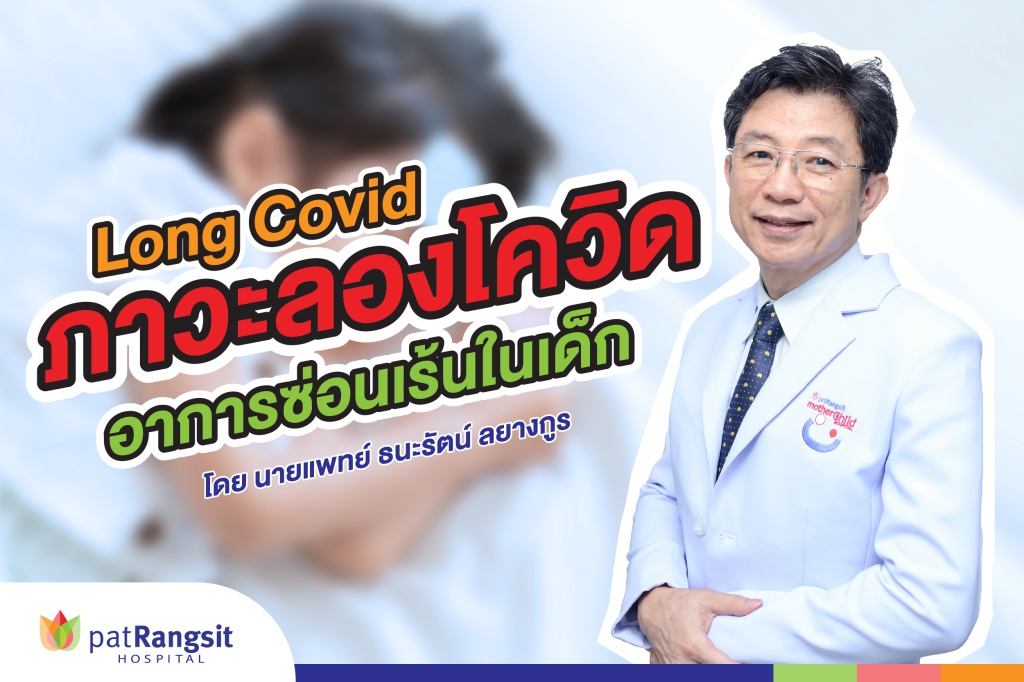
โดย นพ.ธนะรัตน์ ลยางกูร
ผู้อำนวยการโรงพยาบาลเฉพาะทางแม่และเด็กแพทย์รังสิต
Long COVID-19 symptoms are conditions that occur following a COVID-19 infection. Initially, it was observed more commonly in adults with severe COVID-19 symptoms compared to children. However, since the beginning of 2022, an increasing number of children have been infected with COVID-19, leading to the discovery of Long COVID-19 issues in children. This explains why some children experience symptoms that persist longer than others.
What is Long COVID in children?
Long COVID symptoms in children appear 4 to 8 weeks after a COVID-19 infection and can last for over 3 months. While most children infected with COVID-19 exhibit no or milder symptoms, some cases result in severe symptoms requiring pediatric intensive care.
Prevalence of Long COVID-19 in adults and children The incidence of Long COVID in adults can be as high as 25-30% following a COVID-19 infection. Reports from the United Kingdom indicate Long COVID cases in children at approximately 7-8% after COVID-19 infection. This prevalence is higher among older children compared to younger children. Other risk factors for Long COVID include female gender, allergies, underlying diseases, and severe initial infection.
Long COVID symptoms in children can be categorized into two types:
• Headaches
• Fatigue, weakness, rapid heartbeat, and chest pain
• Insomnia
• Muscle pain, abdominal pain, nausea, vomiting, and body rashes
• Difficulties in communication, such as trouble finding words
• Impaired academic performance
• Short attention span
• Emotional expression abnormalities, which may be caused by Long COVID or communication difficulties
Many physical symptoms are challenging to recognize, and certain symptoms, especially neurological symptoms, may be hidden. Parents and teachers should closely monitor children who struggle to communicate or exhibit academic decline or changes in behavior. Suspecting Long COVID and involving the child in the diagnosis and treatment process, whether through a child development clinic or child psychiatry, is crucial for their care.
Treatment of Long COVID in children Given the wide range of symptoms associated with Long COVID, treatment should involve investigating the underlying cause and close medical supervision. It is essential to identify any complications resulting from COVID-19 or unrelated disorders, such as diabetes following COVID-19 infection. Treatment is primarily based on managing symptoms and addressing detected abnormalities. As Long COVID is still a relatively new condition, further research is needed to enhance treatment approaches.
บทความโดย นพ.ธนะรัตน์ ลยางกูร
ผู้อำนวยการโรงพยาบาลเฉพาะทางแม่และเด็กแพทย์รังสิต
สนใจสอบถามหรือปรึกษาแพทย์ สามารถติดต่อได้ที่...
เบอร์โทร : 02-998-9888 ต่อ 3101 , 3102 (คลินิกกุมารเวชกรรม)
02-998-9888 ต่อ 3216 , 3217 (คลินิกพัฒนาการเด็ก)
ช่องทางอื่นๆ
Facebook : PatRangsit Hosptal
INBOX : https://bit.ly/2xNaFc1
LINE : https://bit.ly/33p9nzw
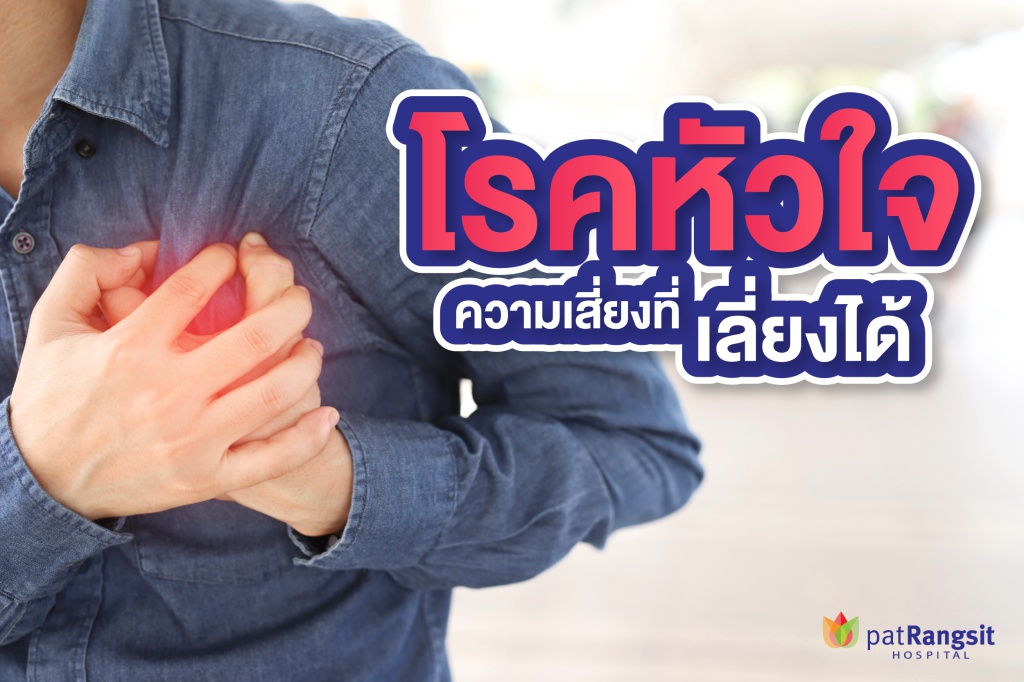
What is heart disease?
Heart disease is characterized by abnormalities in the functioning of the heart and can have detrimental effects on the body. It encompasses several types, including coronary artery disease, heart muscle disease, heart valve defects, arrhythmia, and congenital heart defects.
Symptoms of heart disease The symptoms of heart disease vary depending on the specific type. However, there are five common symptoms that can aid in diagnosis:
Risk factors for heart disease Heart disease can be attributed to various causes, which can be categorized into two groups:
Group 1: Factors that cannot be controlled, such as:
• Congenital heart abnormalities or a family history of heart disease, which can increase the risk compared to the general population
• Aging, which can lead to decreased organ function, including the heart
• Gender, as men tend to have a higher incidence of heart disease than women
Group 2: Factors that can be controlled, such as:
• Managing congenital conditions like diabetes, high blood pressure, or hyperlipidemia, which can reduce the risk of heart disease
• Avoiding substances like alcohol, cigarettes, certain medications, or drugs for weight loss
• Preventing infections, as bacterial or viral infections can lead to heart infections and subsequent heart disease
Diagnosis of heart disease?
• Medical history and physical examination
• Electrocardiogram (ECG)
• Echocardiography to assess the heart's structure, function, and valve condition
• Exercise stress test to evaluate coronary artery disease
• Imaging techniques such as X-rays or other electromagnetic waves
• Cardiac catheterization to assess potential blood vessel problems in the heart
The treatment of heart disease
Treatment methods for heart disease vary based on the specific type and individual circumstances. Generally, the following approaches are utilized:
Regardless of the treatment method, continuous symptom monitoring, risk factor control, maintaining a healthy lifestyle, regular exercise, a balanced diet, adequate rest, and stress management are essential for reducing the risk of recurrent heart disease.

บทความโดย
นพ. ไพบูลย์ เชี่ยวชาญธนกิจ
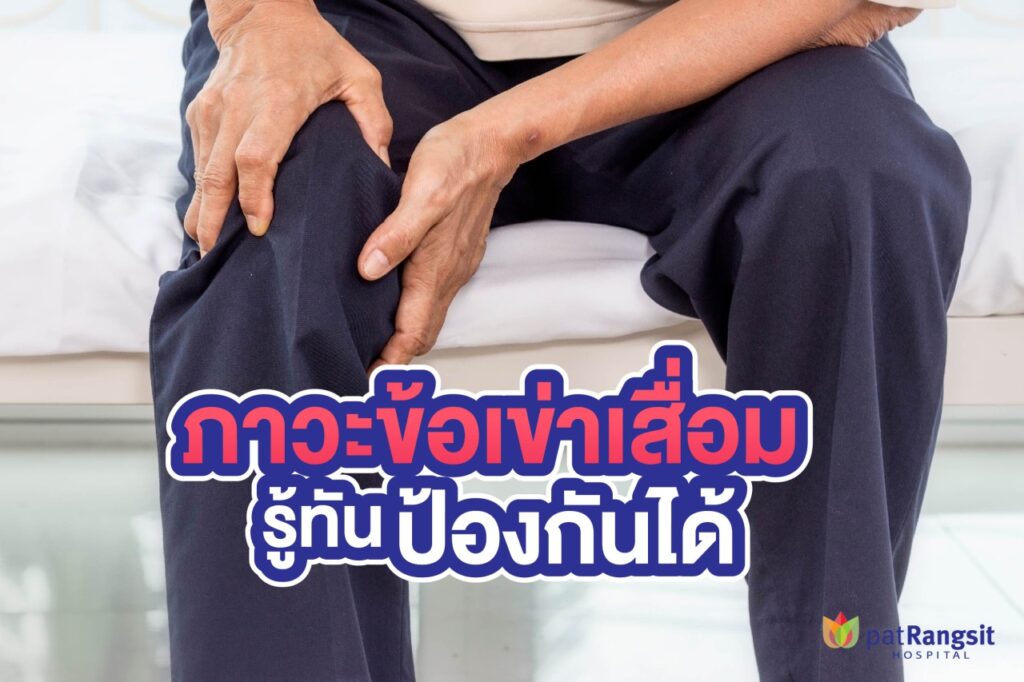
1. What is osteoarthritis?
Osteoarthritis is a structural condition affecting the knee joint, involving various components such as cartilage and ligaments. The knee joint can deteriorate from excessive use or strain beyond the usual level, leading to poor functioning.
2. Causes of osteoarthritis
Osteoarthritis can have various causes, including general factors, age-related factors, excessive knee use, and other factors such as being overweight. Each additional kilogram of body weight increases the force on the knee joint during activities like walking.
3. Warning signs of osteoarthritis
4. When should you screen for osteoarthritis?
Osteoarthritis screening can be performed at any age, but it is recommended particularly for individuals over 50 years old. Women have a higher risk of osteoarthritis compared to men, with twice the likelihood. Additionally, individuals experiencing knee pain are strongly advised to undergo examination.
5. How to prevent osteoarthritis?

บทความโดย
นพ.สลัธรรม โตจิราการ
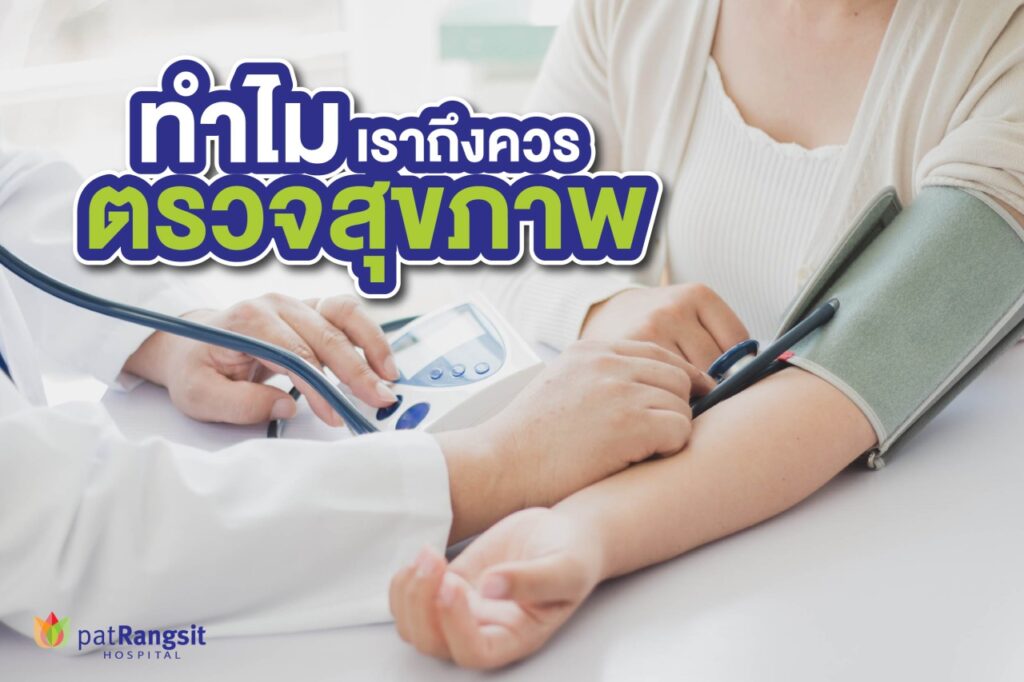
The importance of health checkups: Having a health checkup every year is crucial for disease prevention and early detection, both for individuals who are healthy and those who are already ill. Regular health checkups can reduce the risk of developing complications. Most serious diseases, such as cancer, heart disease, and kidney disease, often develop over months or years. During this time, our bodies can undergo changes that may affect our internal organs. Therefore, health checkups help us prevent the risk of various diseases.
Which age group should get a health checkup? Important age groups for health checkups are divided into two main periods.
What does a health checkup for each age group look like?
• Children aged 15 years and younger: The focus is on their development and vaccination requirements.
• Young adults aged between 15 and 35 years old: Health checkups in this age range focus on assessing the basic functioning systems of the body, such as blood, lung, liver, and kidney functions, as well as sugar levels, blood lipids, and urinalysis. The aim is to identify the risk factors for chronic diseases such as diabetes and hypertension.
• Adults aged between 35 and 50 years old: Health checkups at this age range include basic body checks such as heart function and abdominal ultrasound examinations. This allows screening for conditions such as fatty liver, stones, tumors, cervical cancer, and breast cancer.
• Adults aged 50 years and over: Health checkups for individuals over 50 years old cover all parts of the body. These checkups emphasize cancer screening, including colon and abdominal cancers for both genders, prostate gland screening for men, and breast and ovarian screening for women. Bone and muscle deterioration are also assessed to identify thin bones, osteoporosis, and hormonal deterioration in individuals experiencing menopause or exhibiting related symptoms. Hormone screening is particularly important for women, as they experience a more rapid decline in hormone levels compared to men. Hormonal changes can affect bones, muscles, metabolism, as well as emotional, concentration, and mental well-being.

บทความโดย
นพ.กันตพงศ์ รุ้งวราห์รัตน์

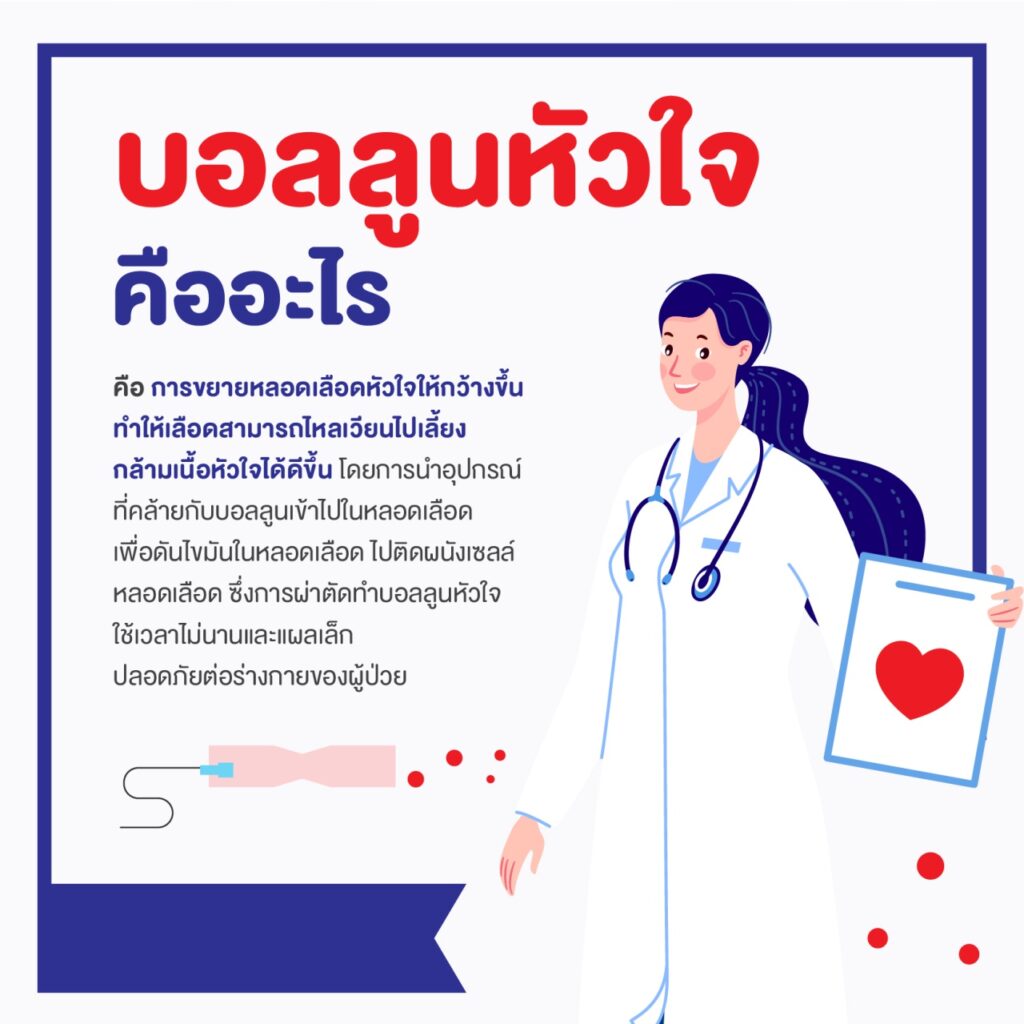
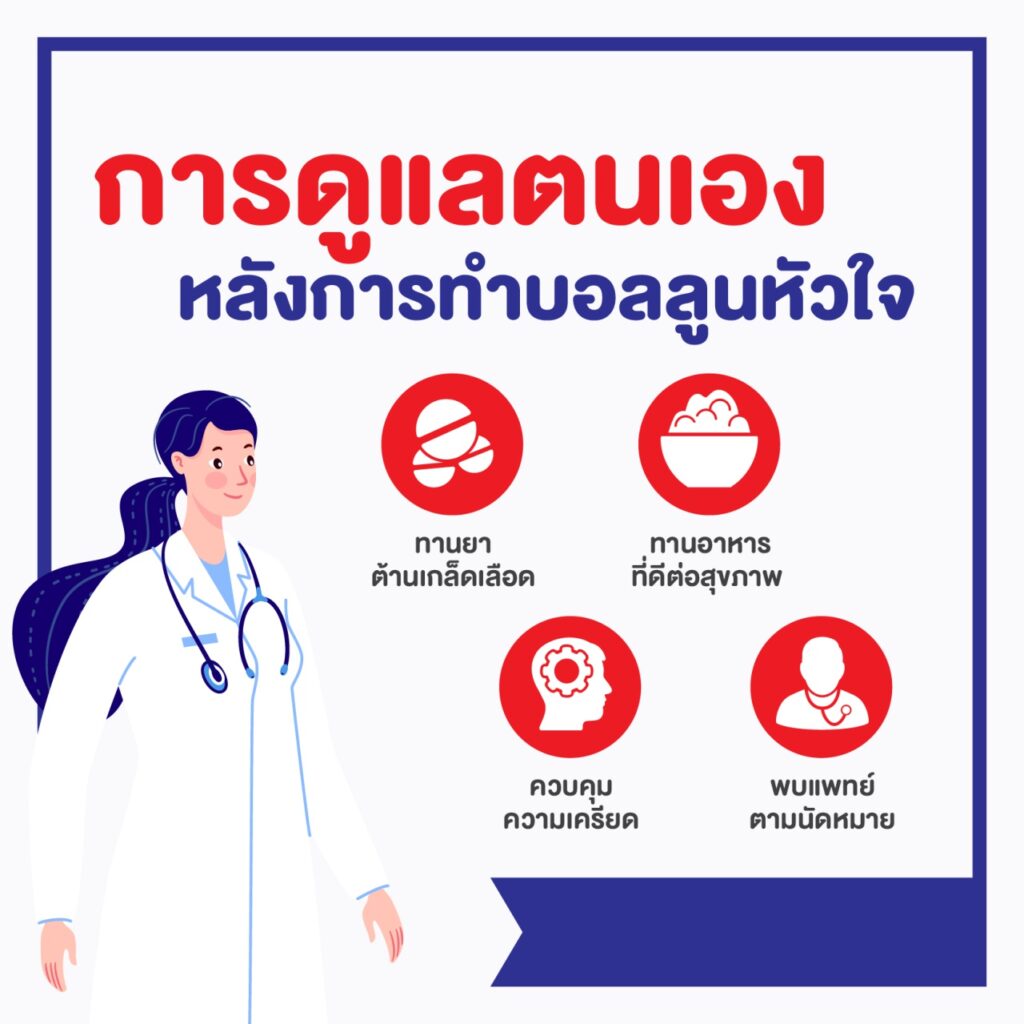
What is a heart balloon?
A heart balloon is used to widen the coronary artery. By introducing a device similar to a balloon into the blood vessels, it allows for better blood flow to the heart muscle. It pushes the fat in the blood vessels against the walls, facilitating the expansion of narrowed or blocked arteries. Heart balloon surgery is a relatively quick procedure, and the incision is small, ensuring safety for the patient.
The process of heart balloon treatment:
Self-care after heart balloon treatment:
Advantages of heart balloon treatment:

บทความโดย
นพ.วัชรินทร์ ประเสริฐสุด
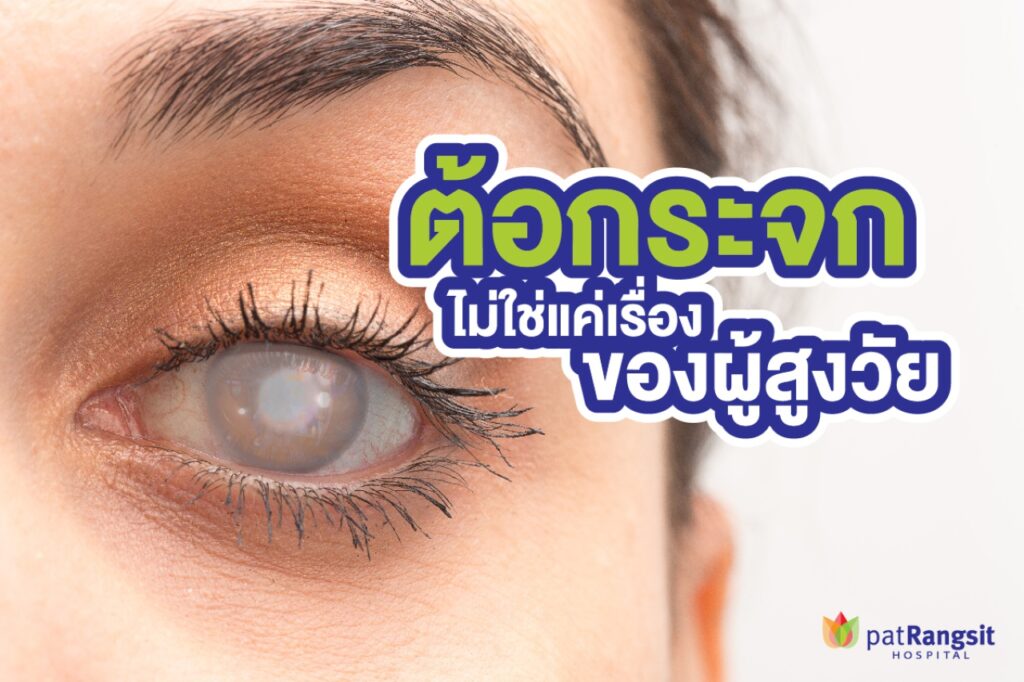
What is a cataract?
A cataract is the clouding of the "lens of the eye." The lens of the eye normally looks clear, which helps concentrate light onto the retina. When cataracts occur, it causes the light to not enter the eye properly, resulting in blurred vision. It is commonly found in the elderly.
Causes of the disease: Cataracts are caused by protein degeneration, a component of the eye lens. This causes the lens of the eye to become cloudy. It is often found in people aged 50 years and over, as the lens of the eye degenerates with age. However, cataracts can also occur in younger age groups, such as in cases of birth defects from mothers infected with rubella during pregnancy.
Other causes of cataracts:
Symptoms of cataracts:
Cataract treatment: In the early stages of cataracts, changing corrective eyeglasses may improve vision. Currently, there are no eye drops or oral medications that can cure cataracts. When cataracts become more severe, surgery is the only method of treatment.
Methods of cataract surgery:
Prevention of cataracts:
เว็บไซต์นี้มีการใช้งานคุกกี้ เพื่อเพิ่มประสิทธิภาพและประสบการณ์ที่ดีในการใช้งานเว็บไซต์ของท่าน